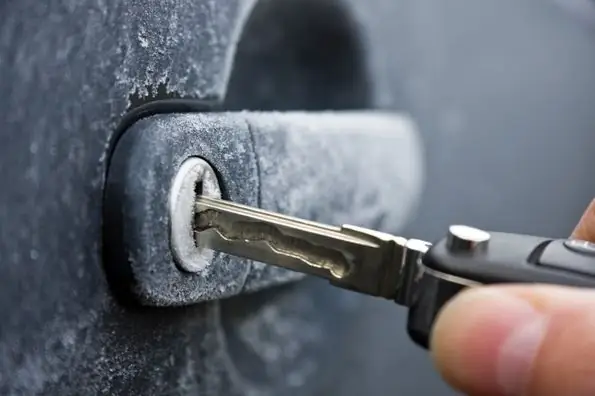- Author Maria Gibbs [email protected].
- Public 2023-12-16 03:05.
- Last modified 2025-01-22 17:48.
Winter is becoming a real challenge for most car owners. In frosty weather, even an expensive foreign car with a powerful engine may refuse to start on the first try, and motorists should remember a few simple rules that will facilitate a "cold" engine start.

Almost all motorists in winter are faced with the problem of "cold" start. The solution to this problem depends on what is causing the problem.
The most common cause of difficulty is a bad battery. If the battery is more than 3-4 years old, and when you try to start the car, the starter does not turn the engine, the battery may need to be replaced. In order to check whether the rechargeable battery holds a charge, it is necessary to measure it using a special device. Experienced car owners advise to "revive" the old battery before starting by turning on the dipped headlights for a while. This will help warm up the electrolyte to speed up engine starting.
Another source of problems can be inappropriate or poor quality engine oil. Not all engine oils are suitable for low temperature operation. When choosing an oil to prepare a car for winter, you should pay attention to the numbers in its specification - 0W or 5W. Only synthetic and semi-synthetic oils have this index. Mineral oil will thicken in cold weather and prevent the engine from starting. It's easy to check - just remove the dipstick and look at the consistency of the oil. If it thickens, it is necessary to warm up the car and change the oil for the appropriate weather conditions.
Useful Tips
- In order to reduce the load on the starter, it is recommended to depress the clutch pedal during a cold start.
- Installing a preheater will require additional costs from the car owner, but will solve most of the problems associated with starting the engine in winter.
- Fuel system components and spark plugs must be kept clean. Before winter sets in, you should go through a service procedure to make sure your vehicle is frost-free.






